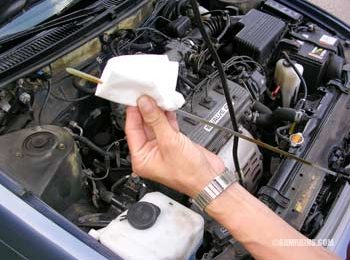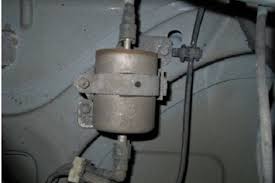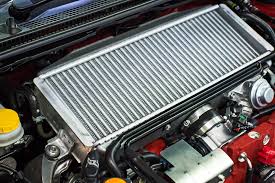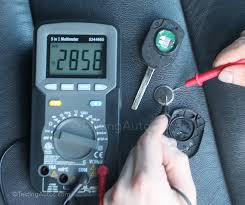Change of transmission fluid is very necessary in a car. Transmission fluid usually performs two important functions; which are lubricating and cleaning transmission metals. As the fluid circulates through the transmission apartment base, it gathers the dirt and metal shavings that can accumulate over time. This debris will settle on the bottom of the pan or housing and not circulate through the system. It is important that you use measures that can flush the transmission fluid, so as to ensure that more of this debris is removed before any new transmission fluid is poured into the vehicle. Supposing the removal of the fluid is being done manually, it important you keep the transmission apartment fluid nob open until the fluid finally drains out totally. By so doing, the dirty that settles on the bottom of the transmission pan would be completely removed. Thereby paving way for a new transmission fluid to enter into the transmission system.
When the transmission fluid gets old, you might have trouble shifting, or your car may get sluggish or stall at stoplights. Nothing prolongs vehicle life more than regular fluid changes. In automatic transmissions/transaxles, the recommended service interval is about every 30,000 miles or 30 months. In respect to specific time, it is important you use car’s manual so as to know the time frame or you use a layman method which requires using dipstick. The Automatic Transmission Fluid (ATF) should be changed sooner if its dipstick reveals dark or burnt-smelling fluid, it mean that the transmission fluid is due for change.
The following are the practical step that will help you embark on changing your transmission fluid in your car.
How to Change Automatic Transmission fluid?
- Get Your Vehicle Ready
To make your engine Fluid less viscous so that it drains out more easily when changing it, it is advisable to carry out this operation after having used your vehicle for more than 10 minutes. Make sure your vehicle is on a flat surface. Turn the engine off and apply the handbrake.
There should be enough space under the car for you to be able to access the fluid sump. If there isn’t, you may use a jack to raise the car, and then stabilise it was jack stands. Never get under the car when it is only held up by the jack – it is very unstable. The purpose of the jack stands is to reduce instability and make the car firm.
- Check the Filling Cap
Before you change your fluid, make sure that the filling cap is not jammed and that you will be able to fill your sump once you have changed the fluid. If it is jammed, you will need to contact a garage mechanic.
- Change the Fluid in the Transmission Housing

Once you have found the Fluid reservoir and the drain plug under your car, protect the ground’s surface by spreading newspaper or paper towel on it. Spreading newspaper or paper towel on the surface is not necessary if what you want to use to put the waste fluid is big enough to contain remove fluid.
Position your container under the plug and make sure it is big enough to contain all of the fluid that needs to be drained. Unscrew the drain plug using a good socket spanner to loosen the plug.
Make sure you do not drop the plug with your gloves. Allow the used fluid to drain out for several minutes. You will notice that used fluid from an automatic transmission appears very clean. However, it should still be replaced.
- Drain the Converter
Once the reservoir is empty, you need to access the converter. Using your vehicle’s service manual, locate the hatch that links the transmission to the engine. If the transmission and engine are separated by a grill, this will need to be dismantled. Then use your fingers to turn the converter until the drain plug appears. Once you have unscrewed it, pour the fluid into the container. Use this opportunity to carefully clean the converter’s casing’s plugs. Once the fluid has been poured in, screw the plugs back in. Remember to reassemble the hatch or grill.
- Fill Your Transmission With New Fluid

Before filling your transmission with fluid, refer to the service manual to find out exactly how much is required and what type of fluid you should use. Once you have selected your specified fluid for the car, use the plastic pipe and the funnel to fill the transmission housing, placing the funnel as high up as possible so that the oil flows through the pipe and into the transmission room. Once you have filled it to the maximum level, screw the plug back in, making sure that you have not left any components on the ground for safety reasons.
- Dispose of the Fluid Properly
Transmission fluid waste is harmful for the environment, and it’s important that you avoid draining or dumping transmission fluids into the environment. Always wear gloves and wash your skin of any residue immediately after completing the change of fluids for safety measures.
Most auto parts stores and body shops will have fluid recycling programs that allow you to drop off your motor fluid, transmission fluids, and other vehicle fluids that you collect when maintaining your vehicle. Find a drop-off site in your area.
Read Also: Most Information on How Much Platinum is in a Catalytic Converter
What To Do Next
Once you have completed your transmission fluid change, start the car and do not accelerate and let it run a few minutes. Then shift your gears a few times, and then put in back in park. Now you can check the dipstick. Pull the dipstick out, wipe it on a clean rag, reinsert it, and pull it out again. Hold it level and check to see where the fluid is sitting on the stick. It should be sitting on the correct line, usually saying full. The normal gauge is the first calibrated line from the head of the dipstick. So for the transmission fluid to be normal after servicing, the fluid should be on that line or close to the line. Once this is complete, you are ready to take it off the ramps, or let it down from the jack. Having come to this stage means that you have completed changing your car’s transmission fluid successfully. At this point you can now engage the gear to make a move. The sound of your transmission system will be so calm and smooth because something refreshing has come into the system. Having successfully completed this has saved you money that would have been paid to mechanic for servicing of your car.
In the next article we are going to pay attention to the cost of transmission fluid.







